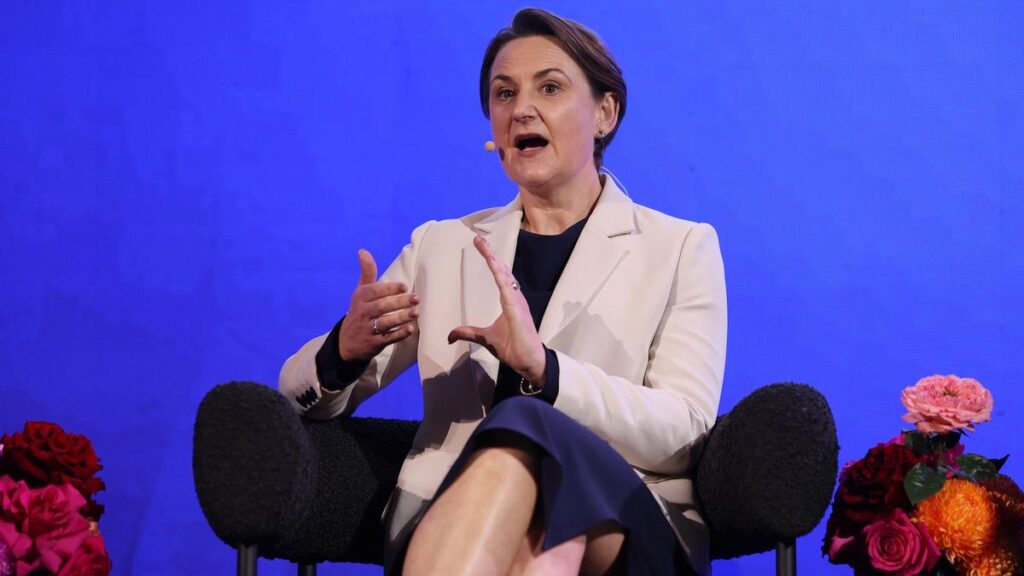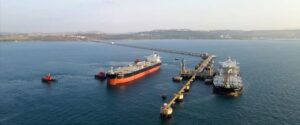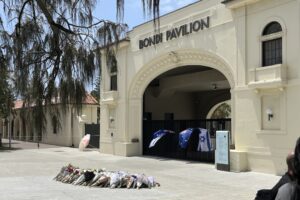
The Resources Technology Showcase event has been held at the Perth Convention Exhibition Centre in Perth. Pictured is minister for energy Amber-Jade Sanderson at the event
UPDATE: The Western Australia Energy Minister, Amber-Jade Sanderson, has just announced a significant delay in the overhaul of the state’s energy transition plan, leaving the industry scrambling for answers. The new deadline for the crucial Whole of System Plan (WOSP) has been pushed back from September 2025 to September 30, 2027, causing widespread alarm among stakeholders.
This unexpected postponement, confirmed in the recent September Government Gazette, has left industry leaders feeling blindsided at a pivotal moment in the state’s energy transition. Shadow Energy Minister Steve Thomas expressed his dismay, stating, “It’s like starting to build your house before the plans are completed.” He accused the government of attempting to obscure the delay from the public, highlighting the urgent need for clarity at this critical juncture.
The delay was communicated quietly, with details buried on page 413 of regulatory documents, prompting frustration among industry groups. As of Tuesday afternoon, the government’s official website still indicated that the WOSP “must be delivered” by September 30, 2025, raising further questions about the transparency of the process.
The WOSP is designed to model multiple scenarios over the next 20 years, guiding investments toward achieving the “lowest cost, lower emissions” electricity supply. Mr. Thomas emphasized that the government had previously promised an update in 2023, a commitment that has now been broken. “We will be well over halfway through the transition the plan is supposed to deliver. What on earth have they been doing over the last five years?” he asked.
One industry executive described the announcement as a “bombshell,” warning that the delay would exacerbate uncertainty and hinder future planning. An internal email obtained by The West Australian indicated that the delay was deemed necessary to prioritize the planning and approval of new transmission infrastructure, a critical move as WA prepares for the retirement of coal plants.
Recently, the South West Interconnected System (SWIS) transmission plan was released, detailing expansions expected to increase network capacity by 1,500 megawatts in Kwinana, Coolangatta, and Kemerton. Minister Sanderson acknowledged the importance of the WOSP in the state’s energy planning, reaffirming that the government is committed to transitioning from state-owned coal-fired power generation by 2030, aiming to outpace the rest of Australia.
Despite the setbacks, both the Premier and Minister Sanderson have been promoting WA’s renewable energy achievements, with renewable generation reportedly peaking at 85 percent of supply this week. Additionally, the Australian Energy Market Operator has confirmed that average renewable contributions reached a new high of 36.4 percent during the September quarter, even as demand surged due to colder temperatures.
As the industry grapples with this delay, the focus now shifts to the government’s next moves. Stakeholders are urged to monitor updates closely as WA progresses through this critical phase of its energy transition. The urgency of the situation cannot be overstated, as the implications of this delay ripple through the industry and affect future energy investments.







